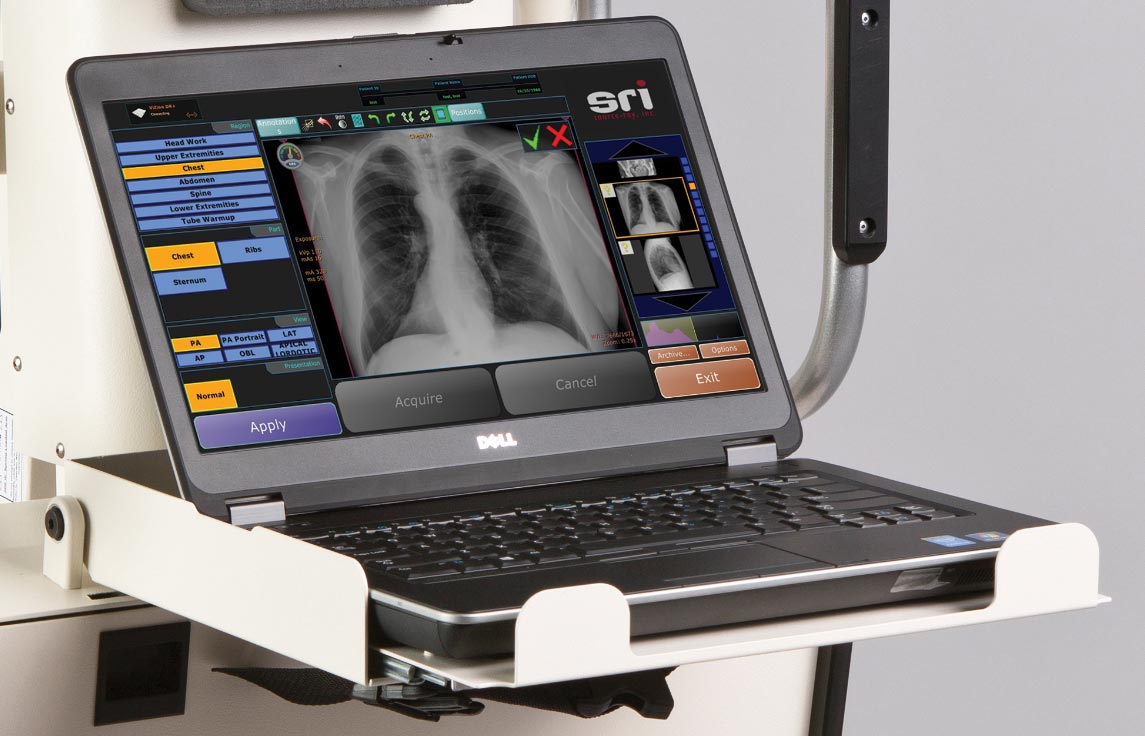
PORTABLE DIGITAL X-RAY
Our company offers Portable X-Ray Services, 24 hours a day, 7 days a week. Continuous response eliminates patients’ stress associated with travel to outside health facilities. 24/7 access can be vital in emergency situations, where saving time is critical.
MQD utilizes the latest state of the art high frequency portable fully digital X-ray units; this digital technology provides a high resolution image. This service is provided using wireless (DR) plates for a more comfortable examination eliminating repeats since images are reviewed by the technician at the patient’s bedside and transmitted for interpretation immediately. The types of x-rays we provide are skeletal views involving arms, legs, pelvis, vertebral column, skull, chest and abdomen without the use of contrast media. Images can be viewed online or provided on CD-ROM for referring physician review.
Portable X-ray Services
 During the medical record review of portable X-ray claims, the following documentation is required to support services billed to Medicare. Documentation that:
During the medical record review of portable X-ray claims, the following documentation is required to support services billed to Medicare. Documentation that:
- Meets the order requirements related to portable X-ray services
- Provides information specific to the individual patient (e.g. the specific condition at the time of service that supports why the x-ray is needed to be performed as a “portable” service.
- Supports the X-ray service itself was medically reasonable and necessary.
- Supports the service was actually performed (x-ray results) and used in the treatment of the patient.
Each of these items are discussed in more detail below.
General order requirements–The order from the qualified licensed physician or nonphysician practitioner (NPP,PA) acting within the scope of law must be written, signed and must specify the reason a portable X-ray test is required, the area of the body to be exposed, the number of radiographs to be obtained and the views needed must also be included in the order, as well as a statement concerning the condition of the patient, indicating why PORTABLE x-ray services are necessary (why the patient needed this exam at the bedside in lieu of being transported to a clinic or office)
Specific indication for “portable” service—The order must document the specific “condition(s)” present for that patient at the time of service which makes PORTABLE X-ray services medically necessary. The presence of a pre-typed generic statement used on all patients, for all situations, not providing any indication of the clinical “reason” the patient could not travel for X-ray services is not sufficient. The medical record must support the clinical reason.
 Medical necessity for the X-ray being performed–As per the Act, section 1862(a)(1)(A), payment cannot be made for a service that is not considered reasonable and necessary for the diagnosis or treat of illness or injury or to improve the function of a malformed body member. The physician or NPP’s written, signed order and supporting medical record must support a medically reasonable and necessary condition for performing the X-ray service….
Medical necessity for the X-ray being performed–As per the Act, section 1862(a)(1)(A), payment cannot be made for a service that is not considered reasonable and necessary for the diagnosis or treat of illness or injury or to improve the function of a malformed body member. The physician or NPP’s written, signed order and supporting medical record must support a medically reasonable and necessary condition for performing the X-ray service….
Records must support the service was performed (x-ray results/interpretation) and used in the treatment of the patient–42CFR 410.32 Diagnostic x-ray tests, diagnostic laboratory tests and other diagnostic tests, requires “All diagnostic X-ray tests, diagnostic laboratory tests, and other diagnostic tests must be ordered by the physician treating the beneficiary, that is, the physician who furnishes a consultation OR TREATS A BENEFICIARY for a specific medical problem and who USES THE RESULTS in the management of the beneficiary’s specific medical problem.
TESTS NOT ORDERED BY THE PHYSICIAN WHO IS TREATING THE BENEFICIARY ARE NOT REASONABLE AND NECESSARY.
Therefore, medical records must provide the tests results and DOCUMENT THAT THESE RESULTS WERE PROVIDED to the ordering physician/NPP and that he/she USES THOSE RESULTS in the management of the patient. In reviewing records for diagnostic services, Medicare is looking for documentation demonstrating the ordering provider reviewed the results to make patient treatment decisions. Examples include a notation written and signed by the ordering physician/NPP on the interpretation report, X-ray results discussed in the treating providers progress note, a notation by staff in a facility record that the ordering provider was notified of the results and any subsequent changes in treatment orders (if any), etc.


